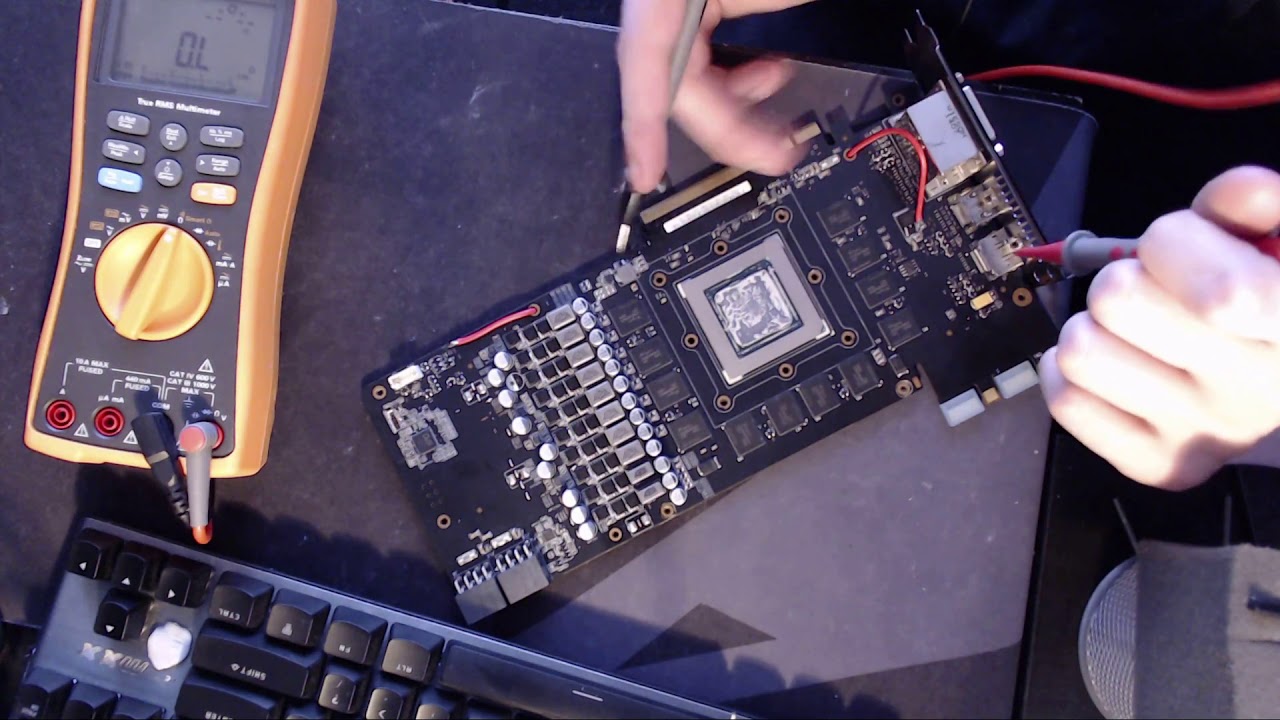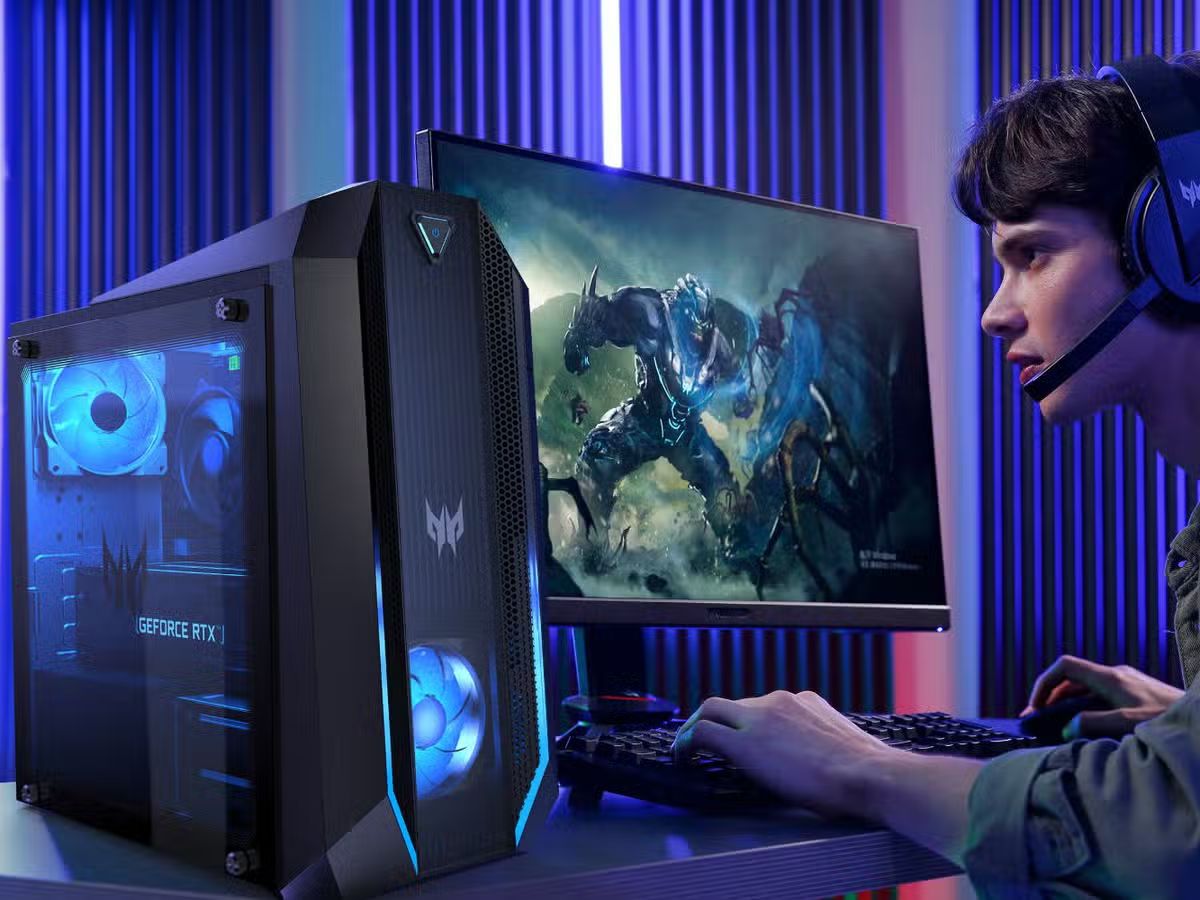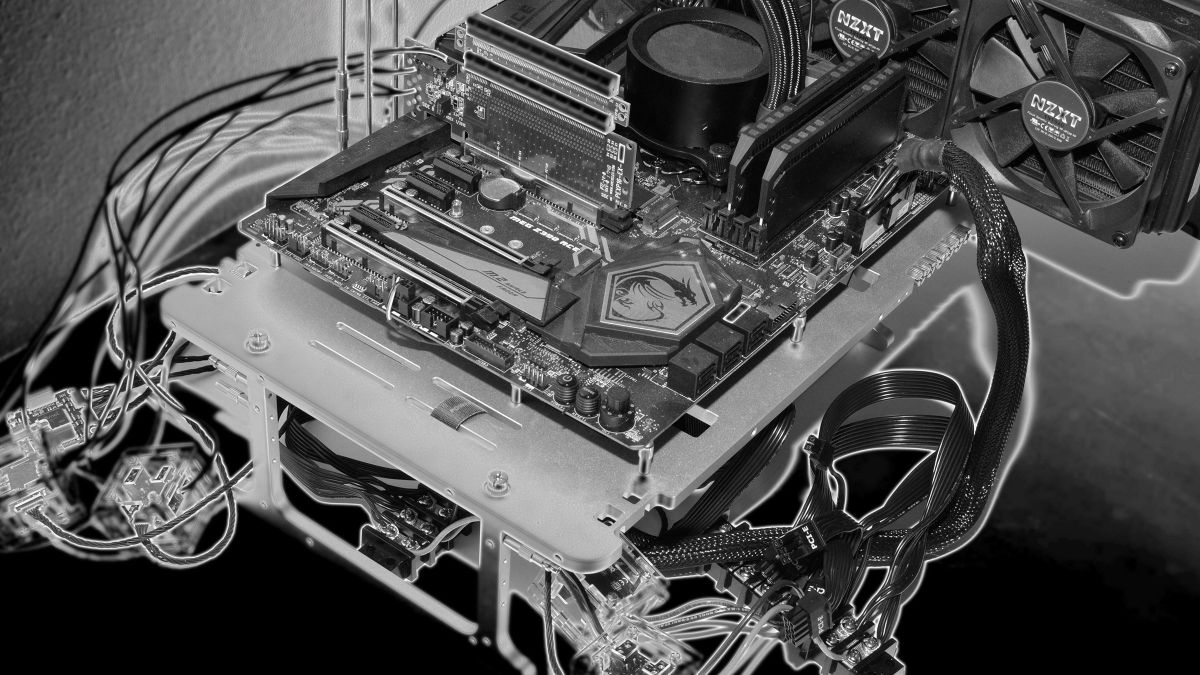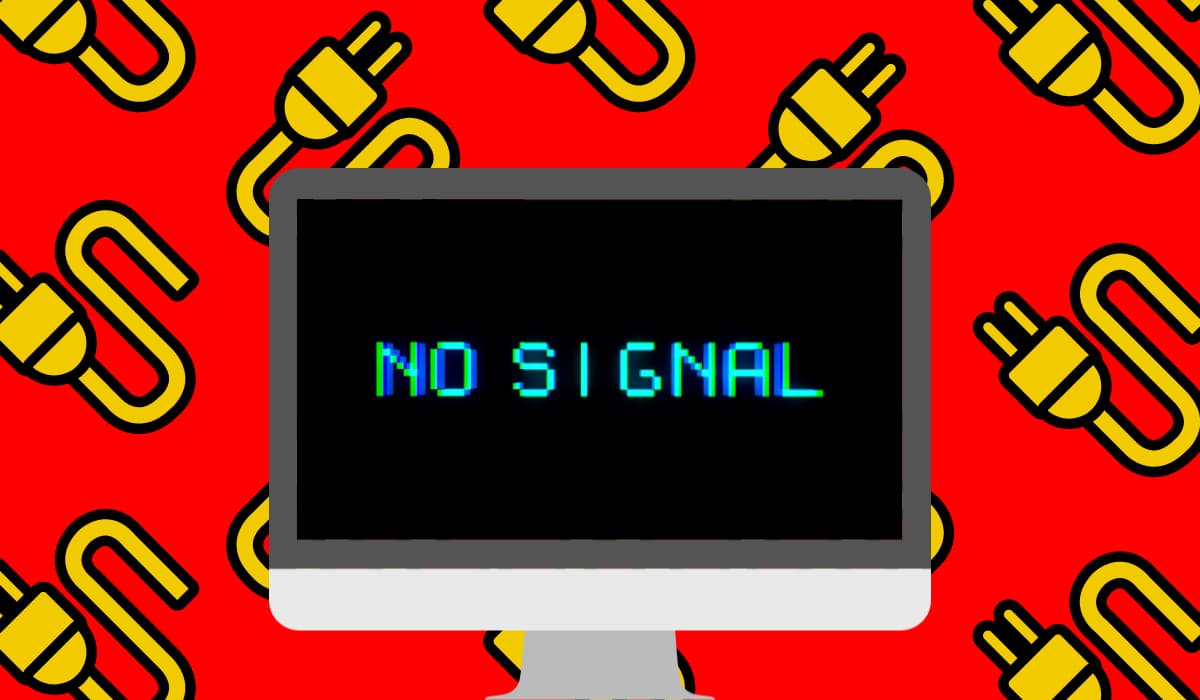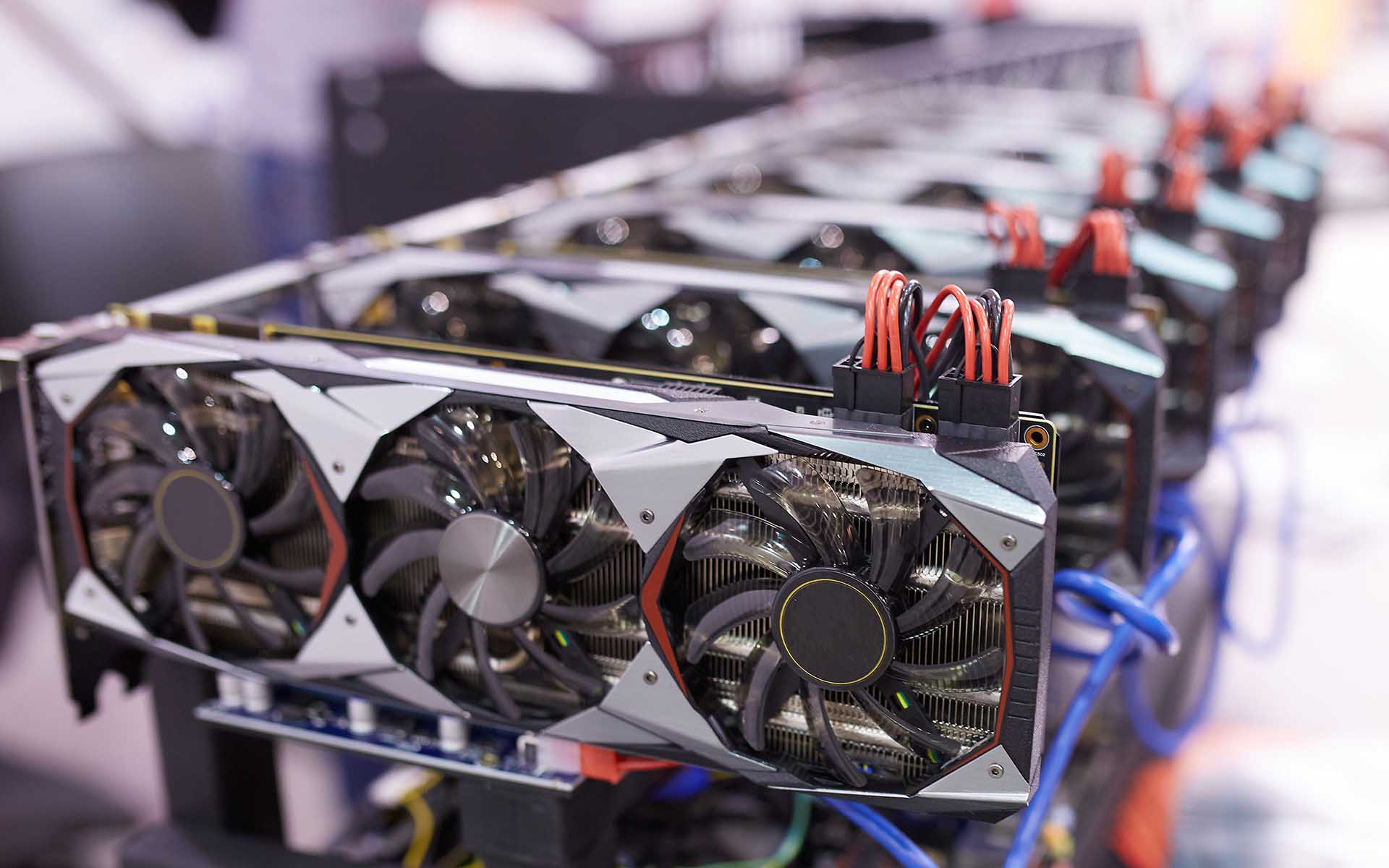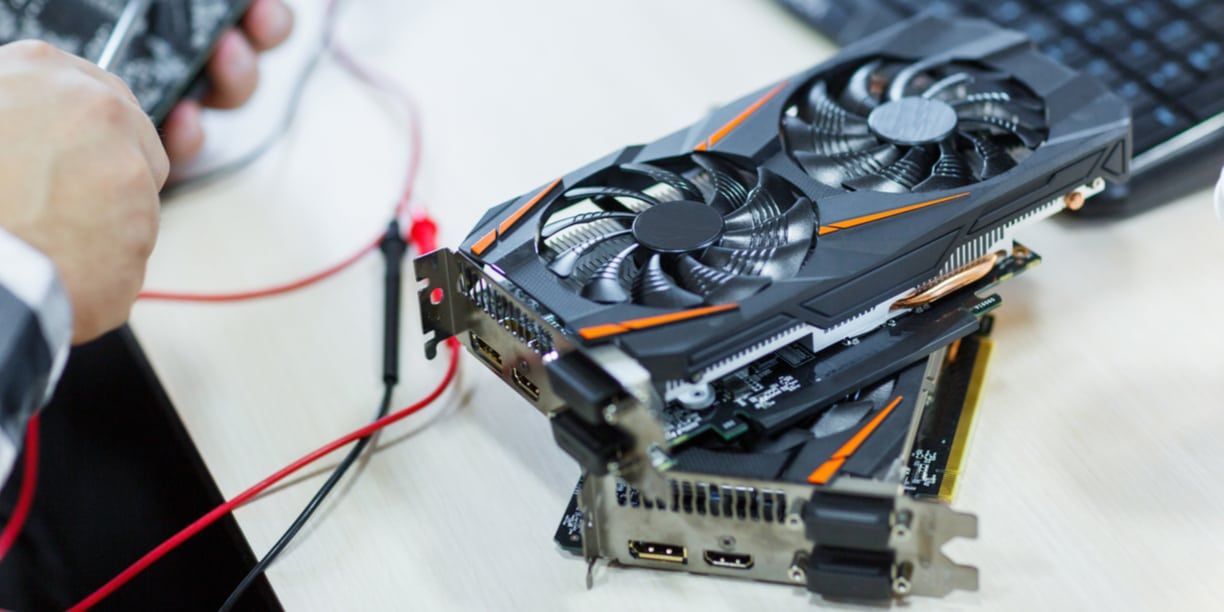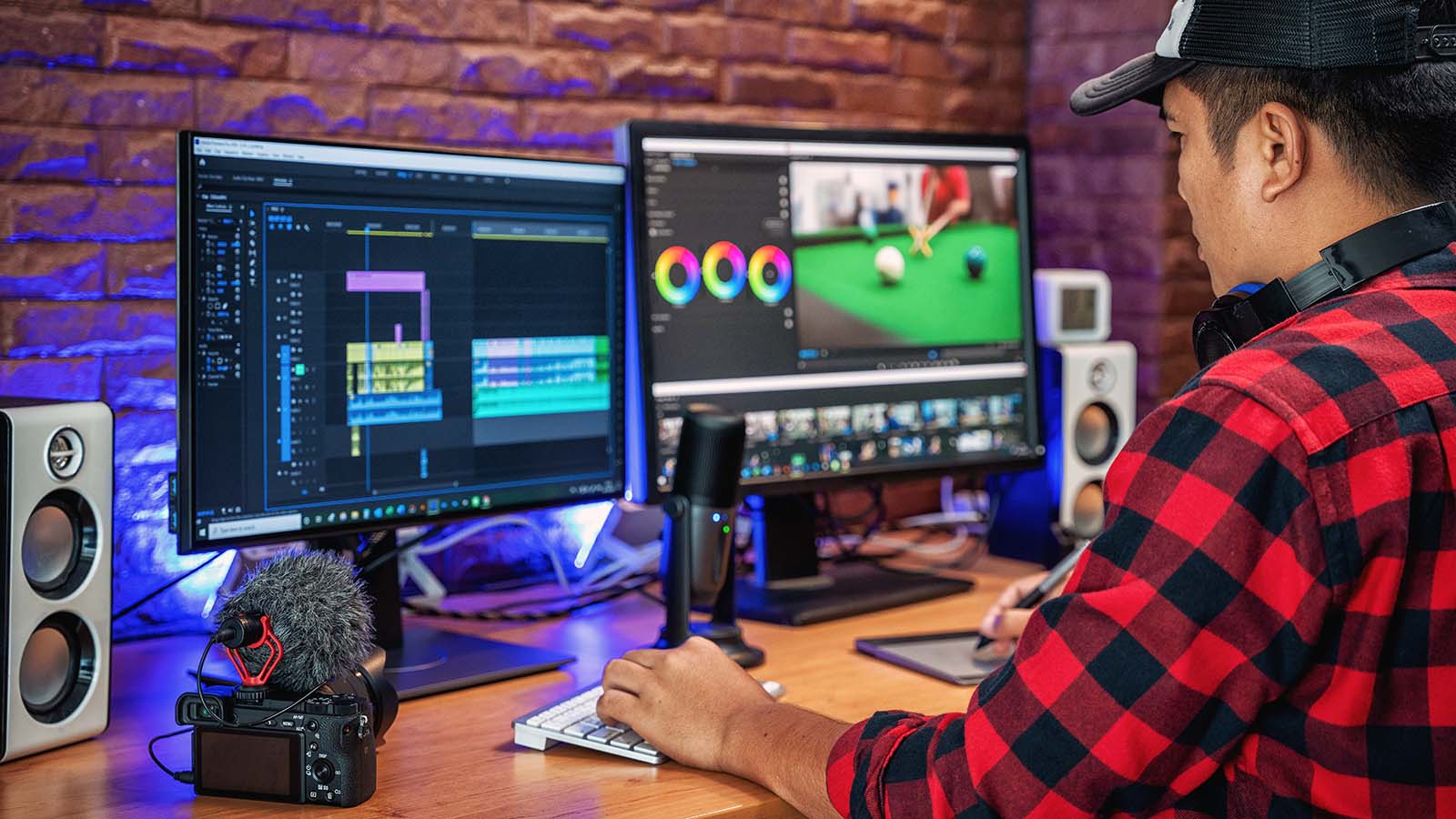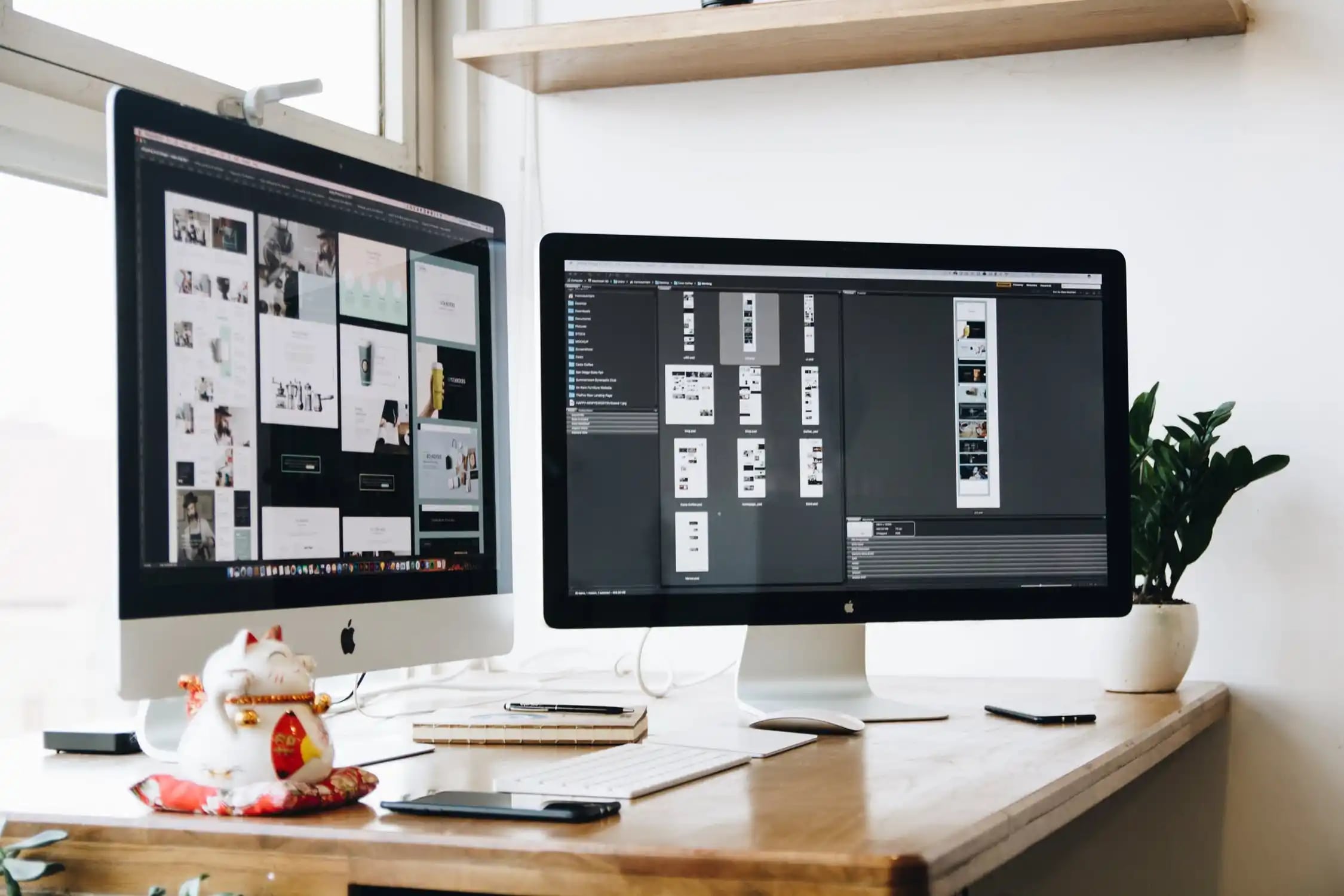Introduction
Welcome to the world of GPUs (Graphics Processing Units)! These powerful components are the backbone of every gamer’s dream machine, delivering stunning graphics and smooth gameplay. However, like any other hardware component, GPUs are not exempt from problems. From visual artifacts and overheating to performance issues and compatibility conflicts, a faulty GPU can ruin your gaming experience.
Fortunately, there are ways to test your GPU for problems and diagnose any issues it may have. Whether you are experiencing lag, strange visual glitches, or suspect that your GPU is running too hot, conducting a thorough test can help you pinpoint the source of the problem and take the necessary steps to resolve it.
In this guide, we will explore various methods to test a GPU for problems. We will cover everything from visual artifacts and overheating to performance issues and compatibility conflicts. By following the steps outlined in this article, you will be equipped with the knowledge and tools to identify and troubleshoot common GPU problems.
It is important to note that while testing your GPU can help identify potential issues, it does not guarantee a solution. In some cases, more extensive repairs or replacements may be required. However, by conducting these tests, you can gain valuable insights that will assist you in making informed decisions about your GPU’s future.
So, without further ado, let’s dive into the world of GPU testing and troubleshooting!
Understanding GPU Problems
Before diving into the testing methods, it’s essential to have a basic understanding of the potential problems that can arise with GPUs. This knowledge will help you diagnose and address issues more effectively.
One common problem is the occurrence of visual artifacts and glitches on the screen. These can manifest as flickering, pixelation, or color distortion. Visual artifacts are often caused by faulty GPU memory or overheating, while glitches can be the result of driver or compatibility issues.
Another issue is overheating. GPUs generate a significant amount of heat during operation, and if the cooling system is inadequate or clogged with dust, the GPU can overheat. This can result in performance degradation, system crashes, or even permanent damage to the hardware.
Performance issues are another concern. If your games or applications are running slower than usual or experiencing significant frame drops, it could indicate a problem with your GPU’s performance. This can be caused by outdated drivers, incompatible software, or a GPU that is starting to show its age.
Compatibility conflicts with other hardware components or software can also cause problems. For example, if your GPU doesn’t meet the minimum system requirements for a game or if there are conflicts between the GPU driver and other software, stability and performance issues may arise.
Understanding these common GPU problems will enable you to spot the signs and symptoms when testing your GPU. By identifying the root cause of the issues, you can take the appropriate steps to resolve them and restore optimal performance.
Now that we have a better understanding of the potential problems, let’s move on to the various testing methods you can use to diagnose them.
Preparing for Testing
Before diving into the testing process, it’s important to make sure you have everything you need. Here are some essential steps to follow to prepare for testing your GPU:
- Gather the necessary tools: To effectively test your GPU, you will need some tools such as benchmarking software, temperature monitoring software, and driver update tools. Make sure you have these tools downloaded and ready to use.
- Update your drivers: Outdated drivers can cause various issues with your GPU’s performance and compatibility. Visit the manufacturer’s website or use a driver update tool to ensure you have the latest drivers installed on your system.
- Clean your GPU: Over time, dust and debris can accumulate on your GPU, hindering its cooling capabilities. Use compressed air or a soft brush to carefully clean the GPU and its fans. This will help prevent overheating during testing.
- Backup your data: While testing your GPU, it’s crucial to backup your important files and data. Although rare, there is always a slight risk of data loss during testing or troubleshooting.
- Create a testing environment: Ensure you have a well-ventilated and dust-free space to conduct the tests. Proper airflow will prevent the GPU from overheating, and a clean environment will minimize potential dust-related issues.
By following these preparatory steps, you will be ready to effectively test your GPU and gain accurate insights into any potential problems it may have. Now, let’s explore the different testing methods you can employ to diagnose GPU issues.
Testing Method 1: Visual Artifacts and Glitches
Visual artifacts and glitches are common indicators of GPU problems. To test for visual issues, follow these steps:
- Check for visual abnormalities: Open a graphics-intensive application or play a game with high graphics settings. Observe the screen for any flickering, pixelation, color distortion, or other visual abnormalities. Take note of any specific patterns or triggers.
- Run a GPU stress test: Use stress test software, such as FurMark, to put your GPU under maximum load. This will simulate demanding graphics tasks and help you identify any underlying issues. Monitor the screen for any visual artifacts or glitches during the stress test.
- Change display cables: Sometimes, faulty display cables can cause visual issues. Try using a different cable or port to connect your monitor to the GPU. If the visual problems disappear, it could indicate a problem with the cable or port.
- Test on a different monitor: Connect your GPU to a different monitor or display device. If the visual issues persist, it’s more likely that the problem resides with the GPU itself. However, if the issues disappear on the different monitor, it could indicate an issue with your primary monitor.
- Update graphics drivers: Ensure that you have the latest graphics drivers installed. Outdated or incompatible drivers can often cause visual problems. Visit the manufacturer’s website or use driver update software to ensure you have the most up-to-date drivers for your GPU.
By following these testing methods, you can systematically diagnose visual artifacts and glitches on your GPU. Once you have identified the source of the issue, you can proceed with the necessary steps to resolve it, whether it’s updating drivers, replacing cables, or seeking further technical assistance.
Testing Method 2: Overheating and Fan Issues
Overheating and fan issues can significantly impact the performance and longevity of your GPU. To test for these problems, follow these steps:
- Monitor the GPU temperature: Install temperature monitoring software, such as MSI Afterburner or HWMonitor, and run it in the background while using your GPU for graphics-intensive tasks. Monitor the GPU temperature and ensure it stays within the safe operating range. If it exceeds recommended temperatures, it may indicate an overheating issue.
- Clean the GPU heatsink and fans: Over time, dust and debris can accumulate on the GPU heatsink and fans, impairing their cooling efficiency. Use compressed air or a soft brush to carefully clean the heatsink and fans. This will help improve airflow and reduce the risk of overheating.
- Inspect the GPU fans: Check if the GPU fans are spinning properly during operation. They should be running smoothly without any unusual noises or vibrations. If the fans are not spinning or are malfunctioning, it can lead to overheating. Try adjusting the fan speed settings in the GPU control panel or BIOS.
- Ensure proper airflow: Check if the GPU and its surroundings have proper airflow. Ensure that there are no obstructions that could hinder ventilation, such as cables or other components blocking the GPU’s intake or exhaust vents.
- Consider aftermarket cooling solutions: If you consistently experience overheating issues, especially during heavy usage, you may need to consider upgrading your GPU cooling. Aftermarket cooling solutions such as aftermarket fans or liquid cooling kits can provide better heat dissipation and overall temperature management.
By following these testing methods, you can identify overheating and fan issues that may be affecting your GPU’s performance. Addressing these problems promptly by cleaning the GPU, adjusting fan settings, ensuring proper airflow, or considering aftermarket cooling solutions can improve the stability and longevity of your GPU.
Testing Method 3: Performance and Benchmarking
Testing the performance of your GPU is crucial to ensure it is operating at its optimal level. By benchmarking your GPU, you can measure its performance and identify any potential issues. Follow these steps to test the performance of your GPU:
- Choose a benchmarking tool: Select a reliable benchmarking tool like 3DMark or Heaven Benchmark. These tools will stress your GPU and provide quantitative data on its performance.
- Run the benchmark test: Start the benchmarking software and run the chosen benchmark test. It will put your GPU through a series of demanding graphics tasks to evaluate its performance in real-world scenarios.
- Observe the results: Pay attention to the benchmark scores, frame rates, and any performance anomalies during the test. If the scores are significantly lower than expected or if there are sudden drops in frame rates, it may indicate a problem with your GPU.
- Compare results with similar systems: Research benchmark results of GPUs that are similar to yours. Compare your results to those obtained by other users with similar hardware configurations. If your GPU’s performance is significantly lower than the average, it may indicate a problem that needs to be addressed.
- Update drivers and software: Ensure you have the latest graphics drivers and software updates installed. Outdated drivers or incompatible software can negatively impact GPU performance. Visit the manufacturer’s website or use driver update software to keep your system up to date.
- Ensure adequate cooling: As mentioned earlier, overheating can affect the performance of your GPU. Make sure your GPU is adequately cooled by cleaning it, checking the fans, and optimizing airflow within your system.
By conducting performance benchmarking tests, you can assess the capabilities of your GPU and identify any performance issues. Addressing these issues by updating drivers, optimizing cooling, or seeking technical support can help optimize your GPU’s performance and enhance your overall gaming or graphics experience.
Testing Method 4: Driver and Compatibility Issues
Driver and compatibility issues can cause a range of problems with your GPU, from crashes and instability to poor performance. Testing for these issues will help ensure that your drivers are up to date and your GPU is compatible with your system. Follow these steps to test for driver and compatibility issues:
- Update graphics drivers: Check if you have the latest graphics drivers installed for your GPU. Visit the manufacturer’s website or use driver update software to ensure that you have the most up-to-date drivers. Outdated drivers can lead to compatibility issues and performance problems.
- Uninstall and reinstall drivers: If you are experiencing persistent issues, consider uninstalling your current graphics drivers and reinstalling them from scratch. Use a driver uninstaller tool to remove all traces of the old drivers before installing the new ones. This can help resolve compatibility conflicts and ensure a clean driver installation.
- Test with different driver versions: If you suspect that your current drivers are causing issues, try installing previous versions of the drivers to see if the problems persist. This can help identify if the issue is specific to a particular driver version and guide you in finding a more stable driver for your GPU.
- Check for system compatibility: Verify that your GPU is compatible with your system specifications. Ensure that your motherboard has the necessary PCIe slots, power supply meets the requirements, and your operating system supports the GPU and its drivers. Checking compatibility before purchasing a GPU can help avoid compatibility issues down the line.
- Test with different software versions: In certain cases, software updates may conflict with your GPU, causing compatibility issues. If you recently updated any software, especially graphics-intensive applications or games, try rolling back to earlier versions to see if the issues persist. This will help determine if the problem lies with the software or the GPU itself.
By following these testing methods, you can identify and address driver and compatibility issues that may be affecting your GPU’s performance. Ensuring that you have the latest drivers installed, uninstalling/reinstalling drivers if necessary, and verifying system compatibility are crucial steps in maintaining a stable and reliable GPU configuration.
Troubleshooting Common GPU Problems
When testing your GPU, you may come across common problems that require troubleshooting to resolve. Here are some common GPU problems and steps you can take to troubleshoot them:
- Driver-related issues: If you experience crashes, performance drops, or visual anomalies, it could be due to driver issues. Start by updating your graphics drivers to the latest version. If the problem persists, try uninstalling and reinstalling the drivers, ensuring a clean installation. You can also try rolling back to a previous driver version if the issue occurred after a recent update.
- Overheating and fan issues: If your GPU is overheating or the fans are not functioning correctly, ensure that the fans are clean and operating smoothly. Check for any obstructions or restrictions in airflow within your system. Consider adjusting fan speed settings or installing additional cooling solutions if necessary. It may also be helpful to monitor and manage the temperature of your GPU during heavy usage.
- Visual artifacts and glitches: If you encounter visual anomalies such as screen flickering, pixelation, or color distortion, test your GPU for any hardware issues using stress test software. If the issues persist, try using different cables or connecting to another monitor to rule out external factors. Updating graphics drivers, especially for older GPUs, may also help resolve compatibility-related visual problems.
- Performance problems: If your GPU is not performing as expected, check for any software conflicts, outdated drivers, or limitations in your system’s hardware specifications. Close unnecessary background applications and ensure that your GPU is running at its optimal performance settings. Additionally, running regular maintenance tasks such as disk cleanup and defragmentation can help improve overall system performance.
- System crashes and freezes: System crashes and freezes can be caused by a variety of factors, including GPU issues. Verify that your GPU is securely connected to the motherboard and that all power cables are correctly plugged in. Update your drivers, remove any overclock settings, and ensure that your power supply can handle the GPU’s power requirements. If the crashes persist, consult with a professional or consider replacing the GPU.
By troubleshooting these common GPU problems, you can identify the root causes and take the necessary steps to resolve them. Always ensure that you follow proper safety precautions and seek professional help when dealing with complex hardware or software issues.
Conclusion
Testing your GPU for problems is an essential step in ensuring optimal performance and a smooth gaming or graphics experience. By following the testing methods outlined in this guide, you can identify and address common issues that may arise with your GPU.
Understanding GPU problems such as visual artifacts, overheating, performance issues, and driver compatibility conflicts is crucial for effective troubleshooting. By systematically testing for these problems, you can pinpoint the source of the issue and take appropriate steps to resolve it.
Remember to prepare for testing by gathering the necessary tools, updating your drivers, cleaning the GPU, and creating a suitable testing environment. This will ensure that your testing process is accurate and effective.
Through testing methods such as observing visual abnormalities, monitoring temperatures, running benchmark tests, and checking for driver or compatibility issues, you can diagnose potential GPU problems. Addressing these issues promptly can help improve stability, performance, and the lifespan of your GPU.
It’s important to note that while testing your GPU can provide valuable insights, some issues may require further assistance or professional help. If you are unable to resolve the problems on your own, don’t hesitate to seek guidance from a knowledgeable technician or the GPU manufacturer’s support team.
By regularly testing and maintaining your GPU, you can ensure that it continues to deliver the high-quality graphics and performance you expect. So, go ahead and put your GPU to the test, troubleshoot any issues you encounter, and enjoy a seamless gaming or graphics experience!







